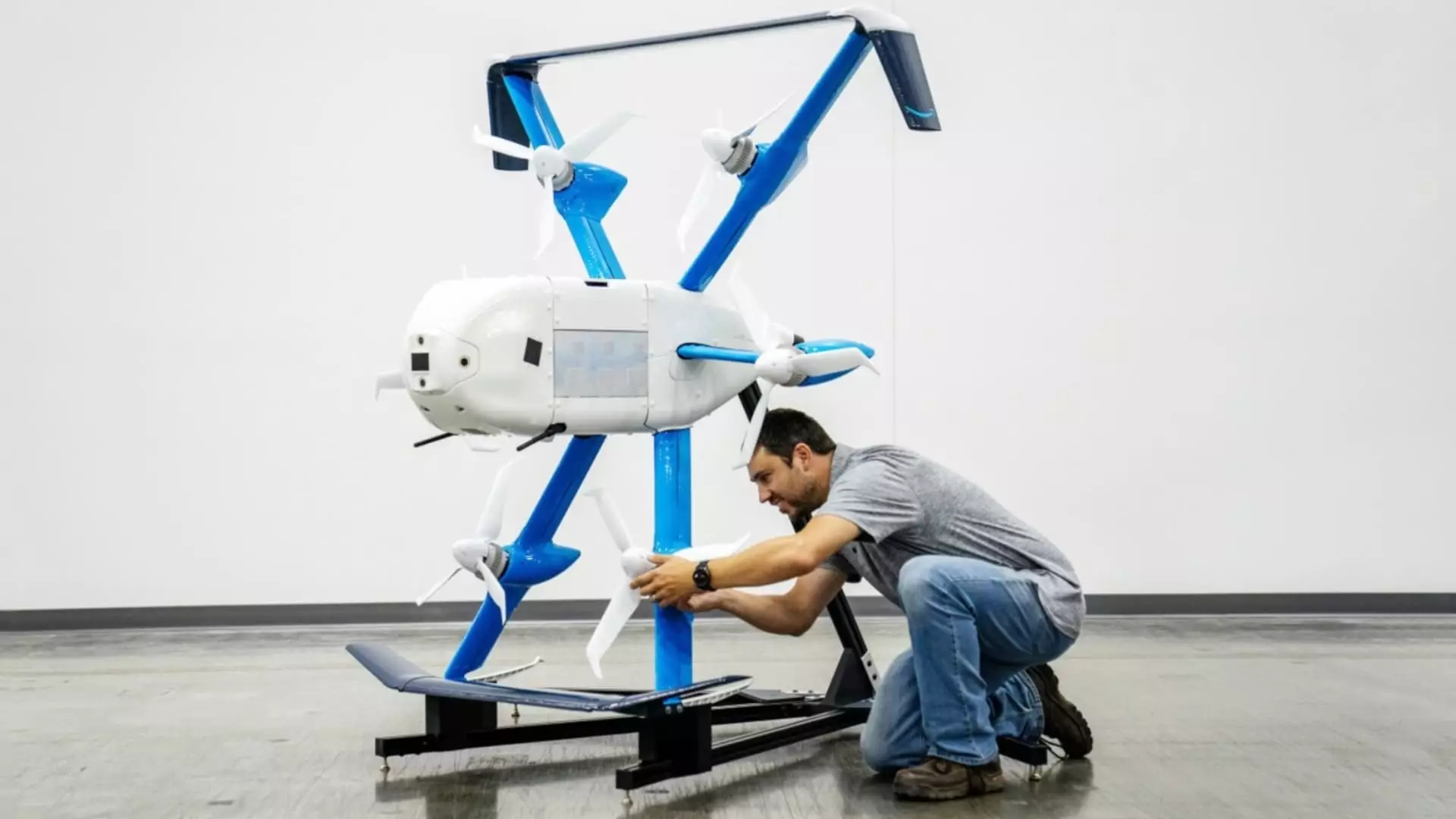In a world where speed and efficiency define the e-commerce landscape, Amazon has courageously taken a step back to emphasize safety. This comes as the company has resumed its Prime Air drone delivery service in College Station, Texas, and Tolleson, Arizona, after a protracted hiatus. The decision to pause operations was not made lightly; an abnormality was detected in the drones’ altitude sensors, attributed to airborne dust potentially skewing altitude readings. This deliberate approach speaks volumes about Amazon’s commitment to customer safety, even when it could have opted to overlook the issue.
Amazon’s spokesperson, Av Zammit, clarified that no safety incident had occurred, yet the company deemed it prudent to resolve the issue fully before re-launching the program. By prioritizing safety, especially in the rapidly evolving field of drone technology, Amazon has shown a maturity that should be applauded by both consumers and industry analysts alike.
The Promise of Unmatched Convenience
Now that service has resumed, it appears that Prime Air is encountering a surge in demand. David Carbon, an executive involved with Amazon’s drone program, recently shared a compelling story that captures the remarkable capabilities of the delivery system: a bottle of ZzzQuil sleep medicine was delivered to a customer in just 31 minutes and 30 seconds. Although the logistics of this are still under wraps—the exact distance flown by the drone remains undisclosed—this narrative illustrates a future where customers can receive essential items at an unprecedented speed.
The importance of timely delivery cannot be overstated, especially in today’s fast-paced world. While the drone delivery model is still in its nascent stages, it’s becoming increasingly clear that consumers are ready to embrace this technology, suggesting that Amazon’s goal to deliver 500 million packages annually by the end of the decade may not be as far-fetched as it once seemed.
Whispers of Success Amid Challenges
While it is exhilarating to witness Amazon’s progress in drone technology, the road has not been without its challenges. The company has been faced with setbacks, such as the cessation of operations in Lockeford, California, and layoffs that impacted its workforce as Amazon’s CEO Andy Jassy undertook a cost-cutting strategy. Moreover, two drones previously crashed during test flights due to software glitches, which raised eyebrows and deepened concerns regarding the reliability of this transformative delivery method.
These incidents serve as a stark reminder that innovation is not free from risk. However, the fact that Amazon is willing to face these challenges head-on reaffirms its determination to refine and perfect this delivery mechanism. The rollout of the quieter MK30 drone, which is engineered to provide enhanced functionality even in adverse weather conditions, demonstrates a forward-thinking approach. It also reveals Amazon’s acknowledgment of the concerns expressed by residents regarding noise levels as drones traversed their neighborhoods.
Future Horizons: Regulatory Milestones and International Aspirations
Amazon’s drone delivery service is not merely a U.S. endeavor; ambitious plans for international expansion are already on the table. A significant regulatory milestone achieved last year can potentially accelerate these plans. The visit by Transportation Secretary Sean Duffy to a Prime Air facility further signifies governmental interest in the integration of drone technology within national logistics frameworks.
As Amazon sets its sights on the U.K. and beyond, its focus remains steadfast on safety and efficiency. The company is making strides to establish comprehensive drone hubs that are considerate of the communities in which they operate. Plans to relocate drone hubs further away from residential areas indicate not only a commitment to minimizing disturbances but also an understanding of the shared space that urban living entails.
In an age marked by technological advancement, Amazon’s resumption of its drone delivery service reflects a progressive outlook that intertwines consumer convenience with crucial safety protocols. Though challenges lie ahead, the company has demonstrated that it is willing to navigate these waters with an unwavering commitment to excellence. As this chapter unfolds, we can expect that the skies will soon be a bustling hub of activity, delivering not just packages, but also innovations that could reshape the very fabric of our shopping experiences.


Leave a Reply